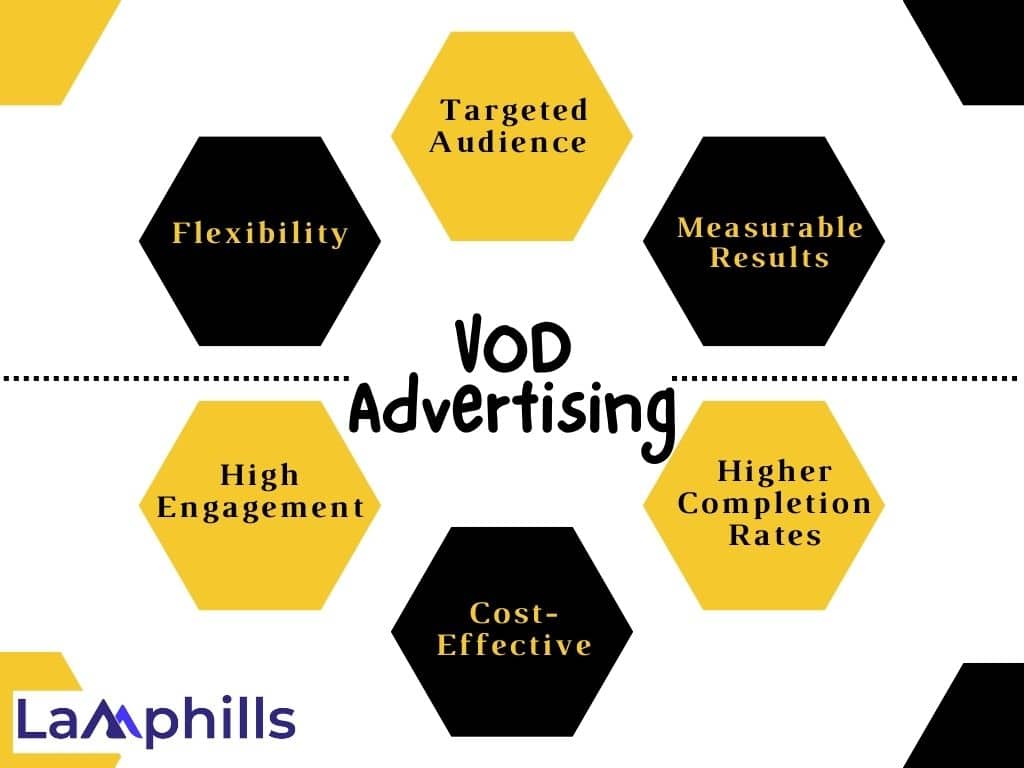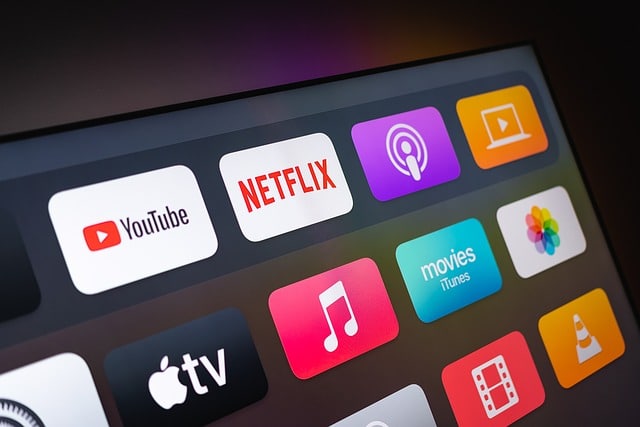Online videos have changed how we spend time online, whether for entertainment, learning, or business, and VOD advertising plays a significant role in this change. Unlike traditional TV ads that air at specific times, VOD advertising reaches people who stream shows and movies on platforms like Netflix, Hulu, and YouTube. This type of advertising is becoming very popular because it targets viewers based on their interests and viewing habits, making the ads more relevant and effective.
I remember when my family would gather around the TV at a set time to watch our favourite shows. Those days feel almost nostalgic now because technology has changed how we watch content. With Video on Demand (VOD) services, we can watch whatever we want, whenever we want. This change has not only altered our viewing habits but also created new opportunities for advertisers.
But what makes VOD Advertising so popular? Let’s examine how VOD advertising helps digital publishers boost engagement and generate revenue.
Key Points
- V.O.D. means Video on Demand—a TV service that lets you watch shows and movies whenever you want instead of waiting for them to air at a specific time.
- Video-on-demand (VOD) advertising shows ads to people who watch videos online whenever they want instead of at scheduled times
- There are four main types of VOD services: SVOD, TVOD, AVOD, and PVOD.
- VOD advertising is increasingly popular due to its ability to target specific audiences based on interests and viewing habits.
- VOD advertising achieves high engagement because viewers choose to watch content on their own terms.
- Despite its benefits, VOD advertising faces challenges such as ad fatigue, where viewers are tired of too many ads, and ad blockers that reduce ad reach.
Before we discuss advertising on VOD, let’s understand what the acronym VOD stands for.
VOD- Video-On-Demand
V.O.D. means Video on Demand—a TV service that lets you watch shows and movies whenever you want instead of waiting for them to air at a specific time. With VOD, you can choose what you want to watch and view it at your convenience, much like renting a movie.
VOD usually costs extra in addition to what you already pay for regular TV services like cable. You have to opt in and pay for content that isn’t included in your standard TV package.
The TV service provider decides which shows are available for on-demand viewing and how long you can watch them. You can stream VOD content over the internet through devices like set-top boxes, computers, or smart TVs.
Nowadays, VOD also includes streaming platforms like Amazon Prime TV, which offers rentals and purchases of exclusive video content not available with the regular Prime subscription.
Types of VOD
There are four main types of VOD: SVOD, TVOD, AVOD, and PVOD.
SVOD stands for Subscription Video On Demand. With SVOD, viewers pay a monthly or yearly fee to watch as many videos as they want. Examples include Netflix and Disney+. Subscribers can watch all the available content without any extra charges.
TVOD -means Transactional Video On Demand. In TVOD, viewers pay for each video they want to watch. It’s like renting or buying a movie online. Platforms like iTunes and Amazon Prime Video offer this service. You pay for each movie or show individually instead of subscribing.
AVOD stands for Ad-Supported Video On Demand. This type is free for viewers, but they have to watch ads during the videos. Platforms like YouTube and Freevee use this model. The ads pay for the content, so viewers don’t need a subscription fee.
PVOD (Premium Video on Demand) services let you watch new shows and movies at home for a higher price, often before they are available in theaters or on TV. You pay extra to watch these new releases early. For example, you can rent or buy new movies on digital platforms.
While SVOD services charge a monthly fee to watch as many ad-free shows and movies as you want, AVOD services are cheaper or free but include ads. TVOD services let you pay to watch a specific movie or show (pay-per-view), but PVOD lets you watch new content early if you pay extra. Each type of service meets different needs, giving you various ways to watch your favourite videos on VOD.
AVOD- Advertising on Video on Demand
Video-on-demand (VOD) advertising shows ads to people who watch videos online whenever they want instead of at scheduled times. Unlike traditional TV ads, which are shown to everyone at the same time, VOD ads appear when viewers choose to watch a video.
This means advertisers can target specific groups based on what they watch, who they are, and what they like and place their ads in these videos. When someone watches a video, they might see an ad before, during, or after the content. This is similar to TV commercials but more flexible. These ads can’t be skipped, so marketers can show their products to more people. For example, in 2023, people watched 3.4 billion hours on Freevee, a free ad-supported streaming TV service, a 38% increase from the previous year.
Before we get into the details, let’s see who’s involved in AVOD (Ad-Supported Video On Demand) and how it makes money.
Publishers
These are the platforms that create or host content, where advertisers pay to place their ads. The more viewers like the content, the more attractive it is for advertisers, which means more money for the publishers. Offering free quality content attracts many viewers to AVOD platforms.
Advertisers
Advertisers pay publishers to show their ads on streamed video content. This helps advertisers create brand awareness and encourage sales. Advertisers depend on publishers to target the right audience. Publishers use detailed user data to show ads to specific groups of people, which makes advertising more effective and profitable.
Content Creators
AVOD platforms don’t need to create or buy content because independent creators post their videos on AVOD platforms. These creators build their own brands and earn a share of the ad revenue, plus they can get sponsorship deals.
User
These are the viewers who watch content on AVOD platforms for free but also see ads. They are the end consumers in the AVOD model.
Why is VOD Advertising a Thing?

In this era of technological advancement, more and more people are choosing to watch videos online whenever they want rather than sticking to traditional TV schedules. This is where Video On Demand (VOD) comes in. VOD advertising has become popular because it reaches people who are already spending a lot of their time – watching videos on platforms like Netflix, YouTube, or Hulu. Here are some other reasons why advertising on VOD is popular:
#1. Targeted Audience
One major benefit of VOD advertising is its accuracy. I once worked on a campaign for a tech company that wanted to reach young professionals interested in new gadgets. With VOD, we could aim ads directly at this group, ensuring our message was seen by the right people. The result was a big increase in engagement and sales compared to traditional TV ads.
Advertisers can show their ads to specific groups of people based on age, interests, and location. This means the ads are more relevant to the viewers, which makes them more effective.
#2. Flexibility
Since people watch VOD content whenever they want, your ads can reach viewers at any time, not just during specific TV show times, making it more likely they’ll see and remember your message.
Also, VOD platforms offer different ad types, from pre-roll and mid-roll ads to interactive and shoppable ads. This lets advertisers choose the best format for their message. In a recent project, we used pre-roll and interactive ads for a fashion brand, allowing viewers to click and buy items straight from the ad. This not only improved the user experience but also boosted sales.
#3. Measurable Results
Measuring the success of traditional ads can be tough. VOD advertising solves this with detailed analytics and reports. With VOD platforms, the number of people who watch the ads and how they interact with them can be tracked. This helps advertisers understand what works and what doesn’t, making their campaigns more efficient.
#4. High Engagement
Viewers are usually more engaged when watching VOD content because they chose to watch it. This makes them more likely to pay attention to the ads.
#5. Cost-Effective
VOD advertising can be more affordable than traditional TV ads, especially for smaller businesses. Advertisers can also control their spending by setting specific budgets.
This means you can control your advertising budget by paying only for the number of views or clicks your ad receives, which is an affordable way to reach your audience.
#6. Higher Completion Rates
Ads on VOD platforms often have higher completion rates, meaning viewers are more likely to watch the entire ad, increasing the chances of your message being seen and remembered.
In summary, VOD advertising is popular because it allows advertisers to reach specific audiences in a flexible, measurable, engaging, and cost-effective way.
VOD Advertising Platforms

Image by yousafbhutta from Pixabay
AVOD platforms are websites or apps where you can watch videos for free but have to see ads. The ads help the platform make money, and they share them with the people who create the videos. Some well-known AVOD platforms are:
1. YouTube: The most well-known AVOD platform is YouTube, with over 2.5 billion active users. Signing up for YouTube is free, but you must watch ads before, during, or after your videos.
YouTube shares its money from ads with those who create videos, encouraging them to keep making content.
2. Hulu has millions of subscribers and offers several subscription options, including a plan with ads that cost less per month and a more expensive plan without ads that lets you watch shows without interruptions.
3. Tubi is a free streaming service that includes ads. It offers a large selection of movies and TV shows from both small producers and big studios, including classic titles and special-interest genres.
4. Crackle: Owned by Sony, Crackle is a free streaming service that shows movies, TV shows, and some original content. Like Tubi, it uses ads to keep the service free.
5. The Roku Channel: This is Roku’s free streaming service. It offers movies, TV shows, and live TV channels, including Roku’s own original shows, all supported by ads.
6. Pluto TV: Owned by Paramount, Pluto TV is a free service with over 250 channels and many on-demand movies and shows. It’s set up like traditional TV, but channels often focus on specific shows (like CSI Miami) or themes (like 00s Replay).
These examples highlight the variety of free, ad-supported streaming platforms available, meeting different tastes and watching preferences. Whether you’re watching for fun or advertising, there’s a platform that fits your needs.
Note: YouTube also offers a premium plan for users who want to watch without ads.
Types of VOD Advertising

Image by Andrés Rodríguez from Pixabay
Publishers can pick from several formats to show ads on AVOD. Here are the main types:
- Pre-roll ads: These ads play before the video starts. Users are ready to watch, so these ads don’t interrupt their viewing experience.
- Mid-roll ads: These ads play in the middle of the video, pausing it to show the ad. This can be annoying for viewers, but if done right, it can reach an engaged audience effectively.
- Post-roll ads: These ads appear after the video ends. Since viewers might leave or stop paying attention, the ad must be attention-grabbing.
Other ad types may include:
- Display ads: These ads appear on the platform but are not attached to a video.
- Banner ads: These ads are placed at the top, bottom, or sides of the video while it plays, without covering the whole screen.
- Interactive ads: These engaging ads encourage viewers to interact with them, like playing a mini-game or completing a poll.
Best Practices for Effective VOD Advertising
To get the most out of VOD (Video on Demand) advertising, follow these best practices. Here are some tips and examples from my own experience:
#1. Know Your Audience
Understand who your viewers are. Before creating ads, learn about your audience. What are their interests, age, and viewing habits?
#2. Create Engaging Content
Make ads interesting and relevant. Your ads should catch the viewer’s attention and be relevant to the content they are watching. Make your ads short and to the point. Most viewers don’t like long ads, so aim for 15 to 30 seconds to keep their attention.
Example: For a fitness channel, I created ads featuring short, easy workout tips that viewers could try immediately. This kept them engaged and interested.
#3. Optimize Ad Placement
Choose the right time for your ads. Based on your goals and content type, decide whether to use pre-roll, mid-roll, or post-roll ads.
I used mid-roll ads to promote kitchen gadgets in a series of cooking videos. Since viewers were already interested in cooking, they were more likely to watch the ad without feeling too interrupted.
#4. Keep Ads Short and Sweet
Avoid long ads. Shorter ads (15-30 seconds) are more effective as they hold the viewer’s attention without intruding.
Example: During a campaign for a new app, I created 20-second ads highlighting its main features. The short format kept viewers engaged and increased app downloads.
#5. Test Different Ad Formats
Experiment with various ad types. Try pre-roll, mid-roll, post-roll, display, banner, and interactive ads to see what works best for your audience.
Example. I tested both banner and interactive ads for a travel agency. While banner ads brought steady clicks, interactive ads with mini quizzes saw much higher engagement, leading to more bookings.
#6. Use Clear Calls to Action (CTAs)
Direct viewers to take action. Make sure your ads have a clear CTA, like “Download Now,” “Learn More,” or “Visit Our Website.”
Example: For a local event, our ads included a “Get Tickets Now” button, which made it easy for viewers to purchase tickets directly from the ad.
#7. Monitor and Adjust Campaigns
Track performance and make changes. Use analytics to see how your ads are performing. Adjust your strategy based on what you learn.
Example. In a new restaurant campaign, I noticed pre-roll ads were more effective than post-roll ads. By shifting more of the budget to pre-roll ads, we saw a significant increase in reservations.
#8. Use High-Quality Videos
Make sure your ads are high quality, with clear visuals and sound. Poor-quality ads can annoy viewers and reduce their effectiveness.
These best practices can help you create effective VOD ads that engage viewers and drive results. By knowing your audience, creating engaging content, optimizing ad placement, keeping ads short, testing different formats, using clear CTAs, and monitoring your campaigns, you can make the most of your VOD advertising efforts.
Below is a VOD Advertising Campaign Checklist. This checklist will guide you through each stage, from planning and budgeting to creating engaging ads and monitoring their performance.
Whether you’re new to VOD advertising or looking to improve your strategy, this checklist will help you stay organized and on track.
Challenges of VOD Advertising
Video-on-demand (VOD) advertising is increasingly popular as more people watch content online. However, it comes with several challenges, such as ad avoidance, targeting issues, and ad fatigue. Understanding these challenges and how to overcome them is crucial for creating effective VOD advertising campaigns.
#1. Ad Fatigue
VOD advertising has many benefits, but it also has challenges. One issue I’ve faced is ad fatigue. Viewers can get tired of too many ads, hurting the brand’s image. To avoid this, we must balance how often ads appear and how relevant they are. I’ve found that using shorter, engaging ads and changing the content often helps keep viewers interested.
#2. Ad Blockers
Ad blockers are another challenge. Many viewers use them to avoid ads, which can reduce the reach of VOD campaigns. To fix this, I focus on creating high-quality, non-intrusive ads that offer value to the viewer. Content that entertains or informs is less likely to be blocked and more likely to connect with the audience.
#3. Ad Avoidance
Viewers often skip ads or use ad-blockers to avoid them. To avoid this, Inoerder creates engaging, high-quality ads that capture viewers’ attention. Offering shorter ads or incentives, like discounts, can also keep viewers interested.
#4. Targeting Issues
Reaching the right audience can be difficult. Use advanced targeting techniques like demographics, interests, and viewing habits to fix this. Platforms like YouTube and Hulu offer these tools to target ads better.
#5. Measurement Difficulties
Tracking the effectiveness of ads can be tricky. To solve this, use analytics tools provided by VOD platforms to measure ad performance. Track metrics like view rates, click-through rates, and conversions to understand ad impact.
#6. High Competition
Many brands are competing for the same audience. To avoid this, differentiate your ads by focusing on unique selling points and creative storytelling. Make your ads memorable and relevant to stand out.
#7. Cost Concerns
High-quality VOD advertising can be expensive. But you can start with a smaller budget and test different ad strategies to find the best. Focus on high-performing ads and targeting options to optimize your ad expenses.
By addressing these challenges with thoughtful strategies, VOD advertising can become a powerful tool for reaching and engaging your audience.
Measuring VOD Advertising
VOD (Video on Demand) advertising is measured by looking at several key metrics showing how well the ads perform. Here are the main things to look at:
1. Views: This is the number of times your ad has been watched. More views usually mean more people are seeing your ad.
2. Completion Rate: This tells you how many people watched your ad all the way to the end. A higher completion rate means more people are interested in your ad content.
3. Click-Through Rate (CTR): This measures how many people clicked on your ad after watching it. It’s calculated by dividing the number of clicks by the number of views. A higher CTR means your ad effectively gets viewers to take action.
4. Engagement: This includes likes, shares, comments, and other interactions with your ad. High engagement means people interact with your content, indicating they find it interesting or useful.
5. Conversion Rate: This measures how many people took a desired action after clicking on your ad, such as purchasing or signing up for a newsletter. A higher conversion rate means your ad is successfully turning viewers into customers.
6. Cost Per View (CPV): This tells you how much you are paying for each view of your ad. It’s calculated by dividing the total cost of the ad campaign by the number of views. Lower CPV means you are getting more views for your money.
7. Return on Investment (ROI): This measures the profit you make from your ad compared to the money you spend on it. A higher ROI means your ad brings in more money than it costs.
By monitoring these metrics, you can assess the effectiveness of your VOD advertising and make adjustments to improve it.
Conclusion
As more people choose AVOD platforms for affordable entertainment, advertisers have a great chance to reach their audience. The growth of AVOD platforms has been amazing, with millions of users around the world enjoying free or low-cost content. It’s the perfect time to take advantage of this growing audience and connect with consumers in a very engaging way.
Answers to Frequently Asked Questions
How does VOD advertising work?
VOD (video on demand) means watching TV shows or movies whenever you want on devices like computers or smart TVs without using regular TV broadcasts. AVOD (advertising-based video on demand) is a type of VOD in which ads play during the videos you watch.
What is VOD on Facebook?
Creating Videos on Demand (VOD) on Facebook is a great way to connect with your audience and can also help you earn extra money.
Is VOD an app?
A VOD, or video-on-demand app, is software that lets users pick any video from the system and watch it whenever they want. Users can watch these videos on any device if the app is installed.
What is VOD content delivery?
Video-on-demand (VOD) is a technology that lets people watch videos, like movies and TV shows, whenever they want. In a cable TV VOD system, these videos are saved as digital files on a central server. When a customer wants to watch something, the video is sent directly to them for immediate viewing.
How to Promote Your VOD Platform
8 Easy Ways to Market Your VOD Platform
- Search Engine Optimization (SEO): Make your website easy to find on search engines like Google.
- Share on Social Media: Post about your VOD platform on Facebook, Instagram, Twitter, and other social networks.
- Send Emails: Email your subscribers to let them know about new content and updates.
- Use Analytics: Track how people use your platform to understand what works and what doesn’t.
- Coupons, Offers, and Referrals: Give discounts, special offers, and rewards for people who refer friends.
- Push Notifications: Send alerts directly to users’ devices to keep them informed.
- Network with Other Companies: Build relationships with other businesses to reach more people.
- Pay-Per-Click (PPC) and Display Ads: Run online ads you pay for when people click on them.
Similar Articles
What is Brand Advertising? How To Build Brand Awareness
Threads Advertising 101: A Complete Guide to Boost Your Campaigns
MARKETING VS ADVERTISING: Differences






